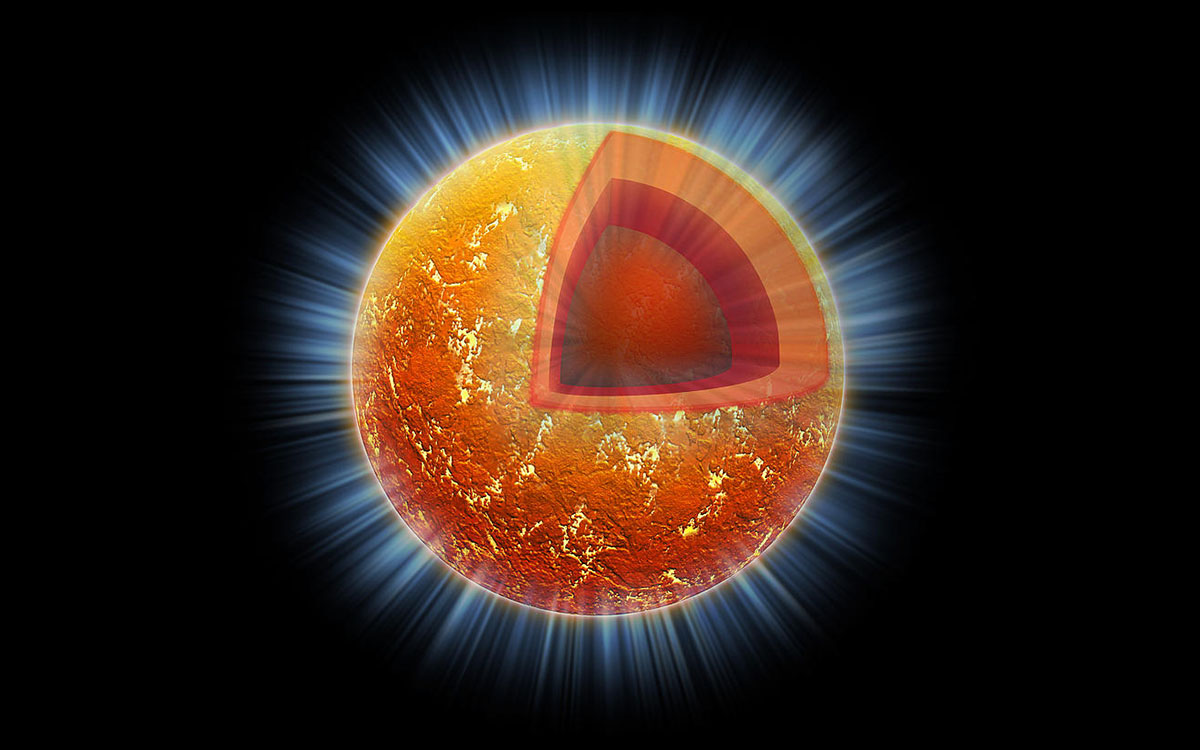how to take a peek inside a neutron star

Have you ever wondered about the anatomy of a neutron star? You probably already know that it’s wrapped in an immensely dense crust a cubic centimeter of which would weigh as much as a small mountain on Earth, and that something akin to an atmosphere might be sloshing around the surface, periodically emitting death beams from its poles. But what about its innards? Since the deeper you go, the more exotic the matter would become, what could we expect in the extreme conditions in the cores of neutron stars? How do we describe the basic composition of one of these stellar cadavers? Well, according to a pair of new new studies, neutron stars are dense and crunchy on the outside with a liquid, superconducting center which forms when neutrons under extreme pressures behave like frictionless fluids. How do we know? Well, it seems that neutrons stars’ cores liquefy with age and as they do, they release a steady stream of neutrinos and cool these massive and turbulent cosmic corpses. The evidence for this theory comes from observations of a neutron star located at the center Cassiopeia A, a neutron star which mysteriously cooled by 800,000 degrees in just a decade.
Now, in the grand scheme of things, this stellar remnant isn’t exactly extinguishing itself since it’s still several million degrees hot, but its 4% drop in temperature is still pretty significant. If you combined that rapid drop in temperature with its steady neutrino emissions, you might just gather some clues about what’s happening on the inside of this object. The best explanation so far seem to be neutrons combining into a quantum fluid in a nice and cozy temperature range of 500 million to 1.8 billion K. In this heat and under crushing pressures just one quantum state away from puncturing the fabric of space and time as we know it, this neutron fluid would churn, helping to conduct massive electromagnetic currents while cooling the stellar remnant inside which it’s trapped. Oddly enough, you can create this odd, frictionless, resistance-less fluid right here on Earth, provided you have access to a lab in which you can lower temperatures within a whisker of absolute zero. Then you can have all sorts of fun with a liquid that can crawl up walls and seep through hermetically sealed containers. But in their apparently natural habitat, this superfluid would be immensely hot, entombed in a hyper-dense shell of degenerate matter for eons on end. Or at least that’s as far as we seem to know…
Of course the only way to really find out what’s inside of a neutron star is to fly to one and crack it open to look at what’s there, but incidentally, that feat would release exponentially more energy than any hypernova, be felt across an entire galaxy, and instantly disintegrate anyone crazy enough to try it. That means we’ll be restricted to observing these cosmic corpses from a distance and guessing what lies inside them by inference, using a number of constantly updated mathematical models. Still, what we have been able to measure and deduce in the decades since we’ve discovered these weird aftermaths of star death is pretty amazing, and we do know that the superfluids we think their cores contain exist because we’ve actually managed to make them on Earth and created their insanely hot relatives in real world quantum oddity, known as quark gluon plasmas, in some of our top supercolliders. So while it’s going to be very hard to conclusively prove that there’s really a quantum liquid surging with energy at the core of a neutron star, all the physics and measurements seem to agree with the idea, and for all intents and purposes, we could start revising our basic conception of its structure.
See: Page, D., et al. (2011). Rapid Cooling of the Neutron Star in Cas A Triggered by Neutron Superfluidity in Dense Matter, PhysRev Letters, 106 (8) DOI: 10.1103/PhysRevLett.106.081101





